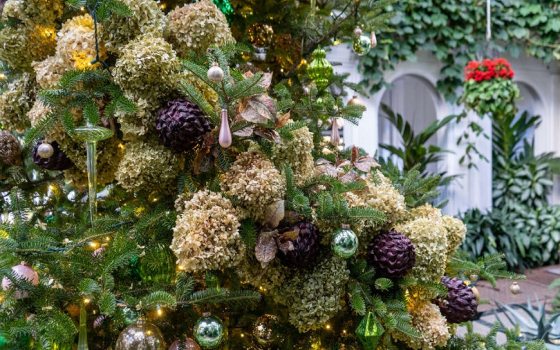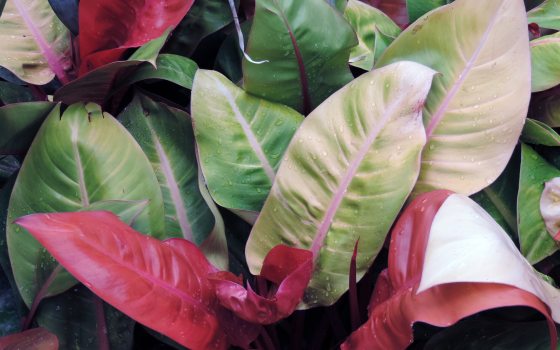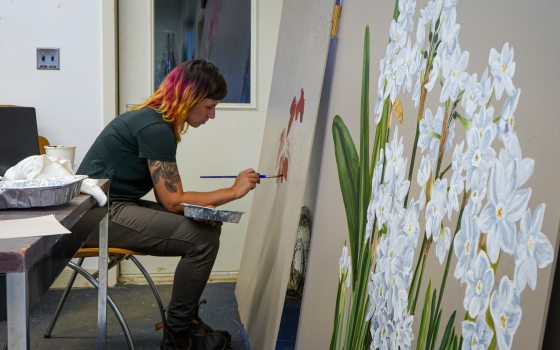Dressed in a variety of dried plant material from gilded lotus pods to puffy hydrangea to textural grasses, this year’s Peirce-du Pont House Christmas display beautifully showcases the versatility and possibilities of dried floral materials. Here at Longwood (and at home), arrangements made from dried flowers serve as spectacular options for the holiday (or any) season … and they help showcase and celebrate the beauty of plants long after their natural growing season. In the Peirce-du Pont House, we’ve woven a variety of natural materials into flowing garland, mantelpieces, and more; the muted colors of our dried materials accentuate and complement the bold greens to soft pinks to touches of gold sparkle throughout the display. We’ve even incorporated Allium and hydrangea that we harvested here in our Gardens in late spring and late summer, prolonging their beauty and showing these plants’ holiday-arrangement potential long after they were picked.
When you enter the Peirce-du Pont House this season, you’ll immediately be greeted by an elegant Fraser fir decorated with emerald, gold, and pastel pink ornaments, as well as dried Hydrangea paniculata ‘Limelight’ and gilded cherry leaves throughout the branches. Also woven throughout the branches is our flowing garland of Longwood-sourced hydrangea and faux purple artichokes, which we handcrafted in-place as we decorated the tree. The cherry on top is our tree topper crafted of dried Arundo donax (giant reed)—a textural grass that resembles pampas grass— that draws the eye upward and adds a whimsically natural touch to the tree.
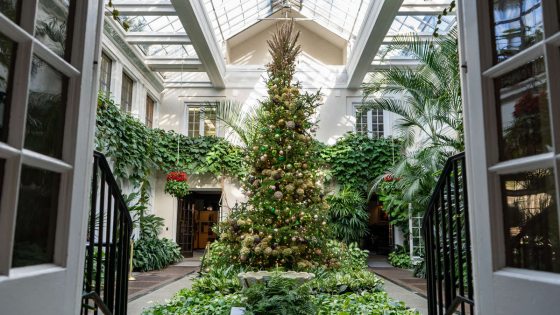
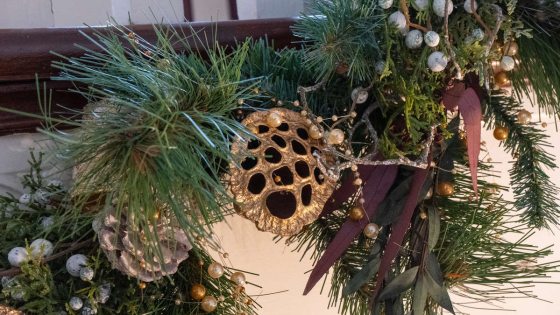
As you explore the house and its festive soundtrack of holiday music courtesy of the Porter Music Box, you’ll find simulated fire displays in each of the fireplaces, with mantels dressed in decorations created from natural elements like pine cones, dried Allium (ornamental onion), dried oakleaf hydrangea, and dried fertile fronds of ostrich fern, which were all harvested here at Longwood. We also added sola wood flowers and dried Pycnosorus globosus (drumsticks) dyed pink.
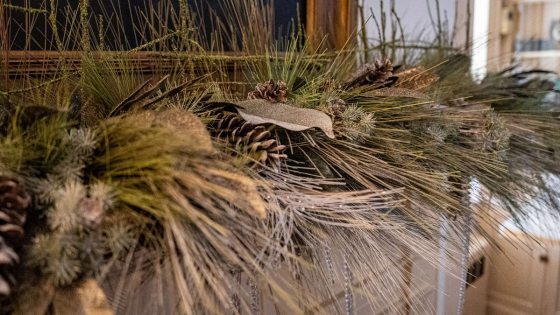
If you’d like to dress your own home in dried floral material, for the holiday or for any time of year, the possibilities are endless. Dried flowers are an excellent material for creating a wide range of projects, from garland and wreaths to terrariums and wall art. If you choose to pick and dry the flowers yourself, it’s all about picking the plant materials close to their prime. While selecting materials, look for those with dramatic branch and stem lines. Keep in mind that you can collect and use far more than flowers for dried arrangements; look for seedpods, cones, berries, and more to add visual interest to your design.
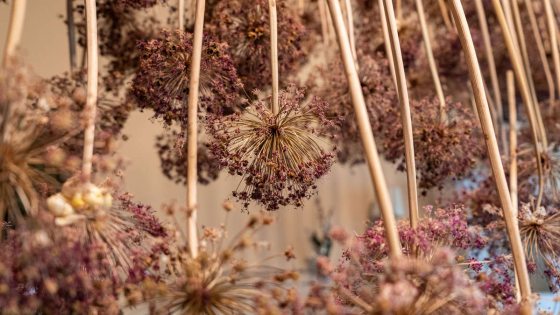
Once you’ve collected your material, be sure to find a cool, dry, dark space to keep them. Many flowers can be dried simply by hanging them upside down in your space. For best results, remove foliage from stems and if you’re drying small flowers, group the stems into small bunches, tying them together before you hang them upside down. If you’re working with large flowers, such as hydrangea, hang them individually rather than in bunches. Allow them to hang for at least a few weeks until they’re thoroughly dried. The stems will dry fairly straight, but you may bend the stems for arranging by submerging just the stems in warm water until they become more pliable.
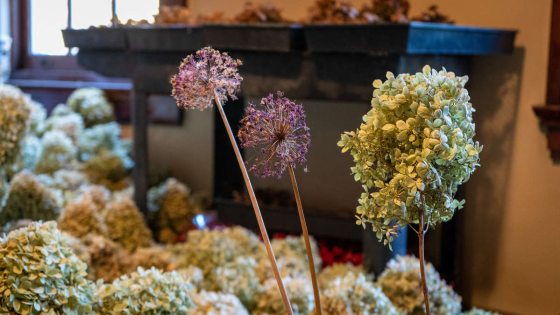
When it’s time to work with the flowers, it takes a gentle touch; dried flowers become much more fragile, so it’s vital to handle them lightly. It’s also important to keep in mind that flowers do have a less intense color once dried, so it’s best to anticipate more of a muted color palette for your creation. There can be quite a bit of trial and error when drying, and then arranging, your materials … but once you’ve accomplished your design, the results are long-lasting and gorgeous.

Come see the beauty of our Allium from last spring, hydrangea from last summer, and much more transformed into festive floral creations here in the Peirce-du Pont House during A Longwood Christmas.
